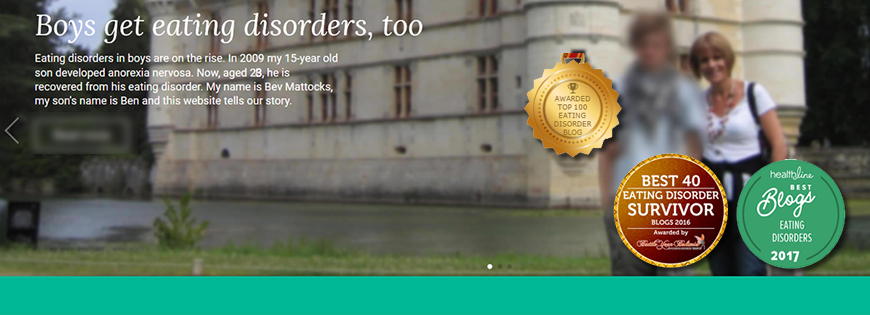Throughout the months and years when I was battling with my son's anorexia and the accompanying mood volatility and violence, I found myself naturally seeking a Safe Place: somewhere I could escape in order to briefly to calm down, catch my breath and gather my thoughts - or to help me get to sleep at night. Sometimes these places were real, other times they were imagined. But they did help when things became intolerable and overwhelming.
Taking a walk down the garden to our vegetable patch was one example. There I found myself observing the vegetables 'mindfully' i.e. in the present, objectively and without judgement, and without any intrusive thoughts getting in the way. The 'unsafe' house with all its angst and fear was metres away at the other end of the garden separated from me by a long green lawn. For a few moments I was safe.
On days when observing the veg patch wasn't practical, I developed a mantra (based on the old nursery rhyme) which started like this: "Once upon a time there were three little foxes..." and then went on to describe in detail the beautiful but secret woodland where they lived (and where I was also permitted to go - the only human allowed to do so. When led into the woodland by the three little foxes, I was safe. No-one and nothing could 'get at me' there).
To get to sleep at night, I imagined myself walking through the large private parkland leading to what used to be my grandparents' big stone Victorian house at the other end. I'd mindfully observe what I was noticing via my senses: the lushness of the grass, the smell of newly mown grass, the dampness of the dew on my feet and so on. And also the solitude because it was private, open to residents only. I'd rarely make it to the other end of the park before I was asleep.
These techniques are still used by therapists in my PTSD (Post Traumatic Stress Disorder) therapy today and it's curious how, during my son's eating disorder, I kind of naturally adopted 'mindful' techniques and safe place visualisation without actually realising that similar grounding techniques play a key role in trauma therapy.
My safe places did - and do - help to calm me down when things got - and get - overwhelming.
Mindfulness is a topic all of its own, of course. I used to flick into mindfulness during scary eating disorder sessions at CAMHS (Child & Adolescent Mental Health Services) when my mind became overloaded with negative emotions and fear. I'd find myself objectively observing the pattern on the therapist's clothes, the clouds crossing the sky outside the window and so on in order to calm me down and stop me from screaming.
There were also 'safe people': a very small handful of selfless, compassionate people who completely 'got' the eating disorder and all its horror and who, in an emergency, I knew I could depend on to rush in and take over. Or just be there for me, without judgement or questions, just quietly and supportively listening, without trying to offer unhelpful advice or solutions.
A prime example is Shirley, the school nurse (who I call 'Sheila' in my book Please eat...). With Shirley, it was a double whammy of having a safe person in a safe place. Safe, dependable, caring Shirley in her safe, dependable, cocoon of a medical centre on the first floor of the old 18th century school building overlooking the rose garden, tennis courts and rugby pitches.
Yesterday Shirley posted a photo of herself on Facebook, sitting at a desk. To me, this epitomised the person I'd encounter whenever I entered the security of the school medical centre: Shirley sitting at her desk in front of the old boarded-up fireplace decorated with happy paraphernalia.
Just looking at this photo made me feel safe - and also teary to know that there are people out there who are so very selfless, dependable and loving in an all-too-often frightening and unsafe world.

No comments:
Post a Comment